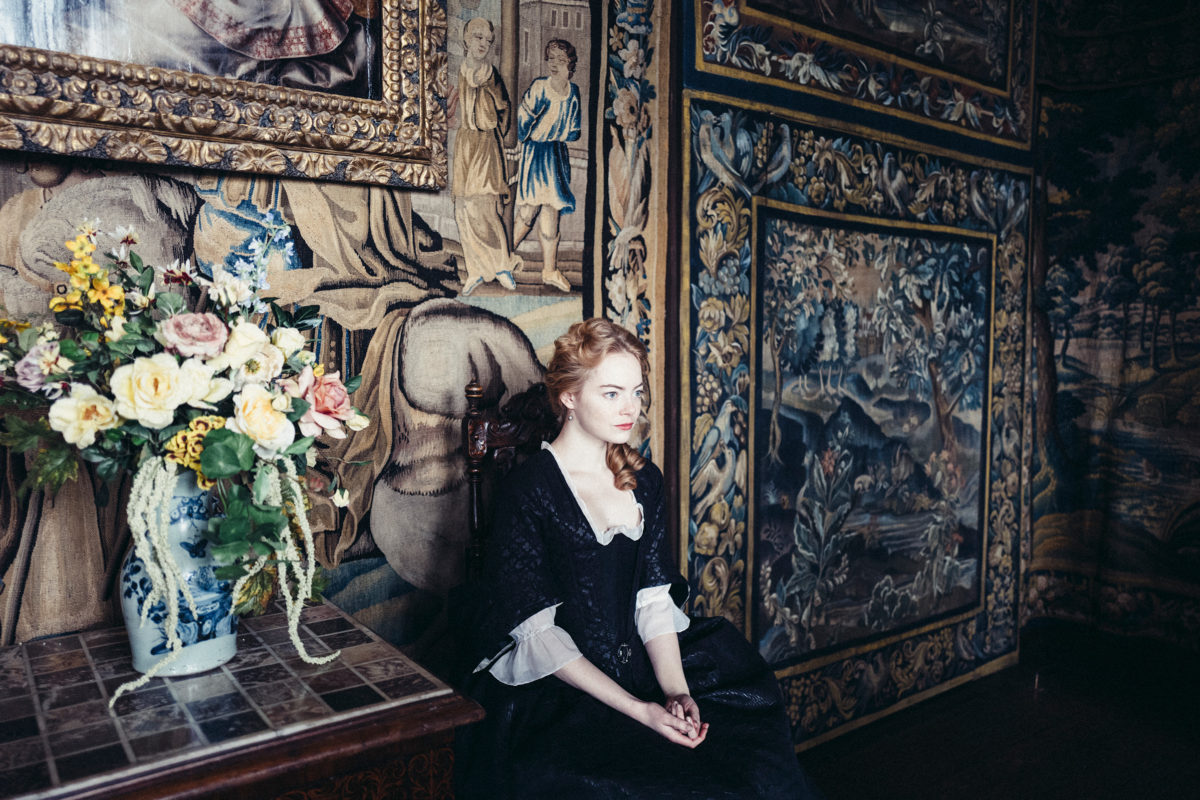Slaps precede sweet talk and lovers’ tussles are primal and sexually charged in Yorgos Lanthimos’ The Favourite (2018). Sex and power prove to be interconnected forces at play and feed off of each other, often in destructive ways. The film is an irreverent spin on a cliché-ridden genre that in Lanthimos’ capable hands transforms into a hilarious lesbian love and sex story involving a battle of wits coupled with a mud-caked, spittle-flecked take on physical comedy.
Central to the film’s charm is Olivia Colman’s Queen Anne, a gout-afflicted woman who has known suffering intimately and wants everyone to partake in her misery. She balks at the first sign of music or any form of enjoyment experienced by the people around her, commanding them to cease all pleasure-making immediately. She indulges, however, in a different kind of pleasure altogether, provided by her confidante, the dour Duchess of Marlborough Sarah Churchill (Rachel Weisz). Their carnal relations are clandestine for the most part, until the Duchess’ personal maid Abigail (Emma Stone) catches them during a tryst in the royal library. Abigail, belonging to a once illustrious lineage but who was herself sold off in a gambling session, is more enterprising than she lets on and has hopes of higher status at the household. She soon usurps the Duchess and becomes the Queen’s primary bedfellow. What ensues is a power play between three characters that touches on the brutalities of love, complexities of gender, and how a woman scorned will stop at nothing to restore her stature.
An element that links The Favourite with Lanthimos’ previous works is his use of animals. The Palace feasts on lobsters, watches ducks for sport, and uses pigeons as moving targets for recreation. A prominent piece of the mise-en-scène in the Queen’s room are the seventeen bunnies that are placeholders for Queen Anne’s dead children (“My babies,” she calls them). She treats them with a fondness that she extends only to her mistress. This choice of animal, as in The Lobster, isn’t arbitrary and holds meaning within the film. On one level, the rabbit is a trickster archetype in folklore, which relates to Abigail’s dishonest, conniving quality. On another note, it speaks of sexual connotations, rabbits being a symbol of sexuality that breed quickly, an irony that references Queen Anne’s inability to produce an heir.
The film is divided into chapters, each heralded by a title card that acts as a hint of the events that will come after. It seems like a gimmick used to make one sequence transition into the next but is also a neat structural device that gives the film an 18th century novelesque quality. The kinetic camera often dollying in and out on the action with a generous use of wide-angle shots is a counterpoint to the old-fashioned title cards, emphasizing that this isn’t your run-of-the-mill period piece. The wide-angle shots, in particular, function as a tool to enhance the space in the film, playing up its vastness in one shot, especially crucial in a movie that has so much visual texture. It is primarily set in a Jacobean prodigy house, replete with mullioned windows and furnished with Baroque-style wallpapers and paintings. Excess is the overarching theme of the set, from the food to the vases, to the shrubs that adorn the extensive greenery outside the Palace.
However, the conflict happens within the Palace premises. Though internal discord in the royal abode echoes the schism between the two parliamentary parties Whigs and Tories, the story really focuses on the triangle of power play between the Queen, Duchess, and Abigail. Political and personal arenas do overlap but this is not a simple tale of rags to riches. Abigail’s ascent was carefully engineered from the beginning. “If I were a man, I would ravish you,” Abigail tells the Queen. It’s a line that gives away Abigail’s Janus-faced character. What the Queen took as a ravish as in to consume after being overcome with great emotion has a dual reading of ravish as in to take away by violence, to plunder and steal.
It’s especially gratifying to watch a director famous for his use of dark comedy, eerie music, stilted dialogue, and offbeat framing to tackle a genre as rictus with tradition as the period film. Equally refreshing is how Lanthimos tackles gender. During an unexpected midnight visit to her chambers, Abigail asks Baron Masham, “Are you here to seduce me or rape me?” “I’m a gentleman,” Masham says. “So, rape then.” As is typical of classic novel narratives, Abigail marries the gentleman, an advantageous move for her, as she becomes a baroness and doesn’t have to live in fear of moving down a rung in society. However, the most interesting character that subverts her gender role is the Duchess of Marlborough. She dresses in structured, masculine-leaning clothes, she is adept at using guns, and is the political backbone of the monarchy. She also sees through Abigail’s act right away.
Her relationship with Queen Anne is one of genuine love, and the nitty-gritties that come with that are beautifully played out in the film. The Queen says love has its limits, to which the Duchess retorts, “It should not.” And that really is the core of the film, more salient even than the nuances of gender in the 18th century. A particularly touching scene in this regard, takes place at the bathtub when the two pretend to be two mustachioed men. It’s so simple but it’s one of the details in The Favourite that bring these historical characters an accessible, more human quality.
The Favourite is a film that is characteristically Lanthimosian but treads new ground for the director. It’s a new take on the period film that is irreverent to the codes of the genre. From its use of camera and space, the hilariously snarky dialogue, and the truly pleasurable performances, it plunges you headfirst to a completely delightful cinematic experience.
